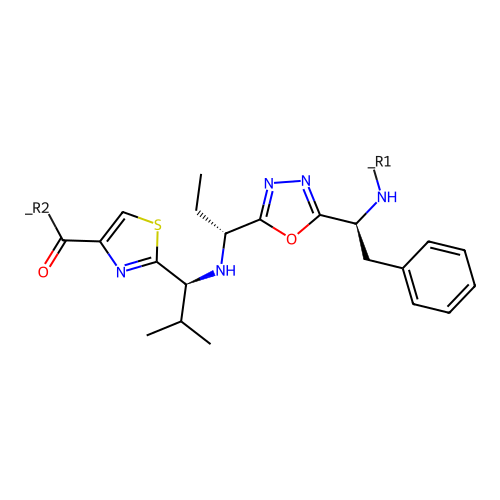CYCLOPS is a web-based tool designed to help predict cyclic peptide (CP) membrane permeability.
Using advanced
machine learning (ML) models, CycloPermIAbility provides an accessible platform for researchers and drug designers
to
accurately assess the permeability of CPs, which is crucial for drug development.
-
Advanced ML Models: CycloPermIAbility integrates models that combine both sequential and global peptide
properties, ensuring high prediction accuracy.
-
Data Augmentation: The tool employs techniques such as amino acid mutations and cyclic permutations to
expand the dataset and enhance model generalization.
-
Circular-Aware Architectures: CycloPermIAbility considers the cyclic nature of peptides, providing deeper
insights into their structural characteristics.
-
User-Friendly Interface: The platform is designed for ease of use, making it accessible to a wide range
of users without requiring specialized computational skills.
Cyclic peptides hold significant potential in drug development due to their unique structural properties and ability to
target intracellular processes. However, predicting their membrane permeability remains challenging. CycloPermIAbility
addresses this by providing reliable predictions, thereby aiding in the design and optimization of CP-based drugs and
contributing to the development of effective therapeutics.
- Select Number of CP Sequences:
Choose the number of cyclic peptide sequences you want to analyze. Adjust this based on your experimental
requirements.
- Specify Length of CP:
Enter the number of amino acids that make up your cyclic peptide. This helps tailor the prediction to your
specific
peptide structure.
- Choose Cyclization Type:
Determine how the peptide ring is closed. CycloPermIAbility currently supports:
Head-Tail Cyclization: This common form of cyclization involves linking the N-terminal (head) of the peptide to
the
C-terminal (tail), forming a closed ring structure.
Head-Side Cyclization: This form of cyclization involves linking the N-terminal (head) of the peptide to a side
chain of
one of the amino acids in the sequence, creating a branched ring structure. For this option, select the branch
terminal
amino acid position and the branch position within the cycle.
- Input CP Sequence:
Select the amino acids for your cyclic peptide sequence from a predefined list. This ensures compatibility with
the
prediction model. A 2D depiction is displayed after selection to assist with your choices.
- Run Predictions:
Execute the prediction algorithm to receive detailed insights into the membrane permeability of your cyclic
peptide.
- Binary Classification:
The SP+PP model classifies cyclic peptides into 'High-Permeability' and 'Low-Permeability' with an accuracy of 82.37%. Other relevant metrics are F1-score: 0.87; ROC-AUC: 0.79 and MCC: 0.59.
- Regression:
The SP model is used to predict the Logaritmized Permeability with Mean Absolute Error (MAE): 0.47; Mean Squared Error: 0.69 and R2: 0.44.














